Urban sustainable developments are becoming increasingly popular as people realize the importance of creating a more sustainable future. Three popular forms of sustainable development are vertical farming projects, green retrofitting, and community gardens. Each of these initiatives can be an excellent way to invest in a sustainable future and make a positive impact on the environment.
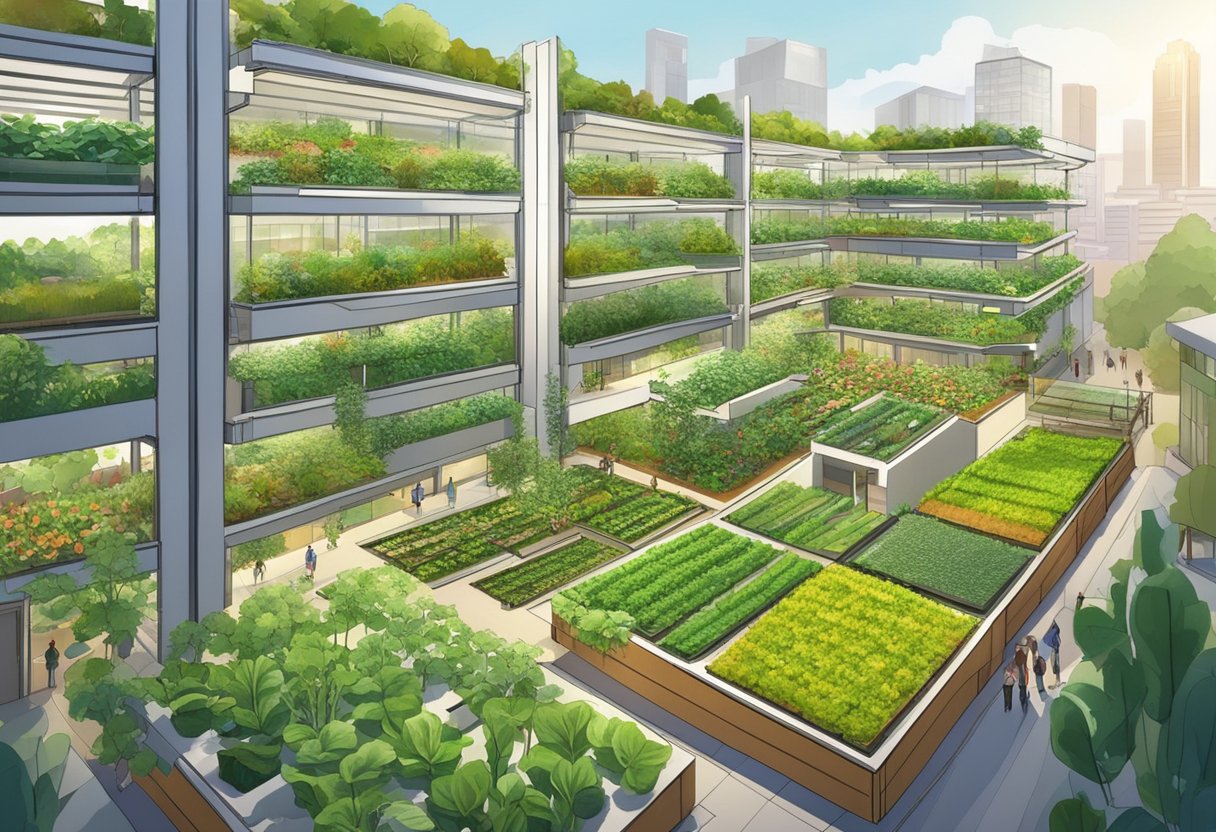
Vertical farming projects are becoming increasingly popular as a way to grow food in urban areas. These projects involve growing crops in stacked layers, using artificial lighting and hydroponic systems to maximize space and efficiency. Green retrofitting, on the other hand, involves making existing buildings more energy-efficient and sustainable. This can include adding insulation, installing solar panels, and using green roofs to reduce energy consumption and waste.
Finally, community gardens are a great way to bring people together and create a more sustainable local food system. These gardens can be located in public spaces or on private land, and they provide a space for people to grow their own food and connect with others in their community. By investing in these types of projects, individuals can make a positive impact on the environment and help create a more sustainable future for everyone.
Key Takeaways
- Vertical farming, green retrofitting, and community gardens are all popular forms of sustainable development.
- These initiatives can help create a more sustainable future and make a positive impact on the environment.
- Investing in crowdfunded urban sustainable developments can be an excellent way to support these initiatives and make a difference in your community.
Understanding Urban Sustainable Developments
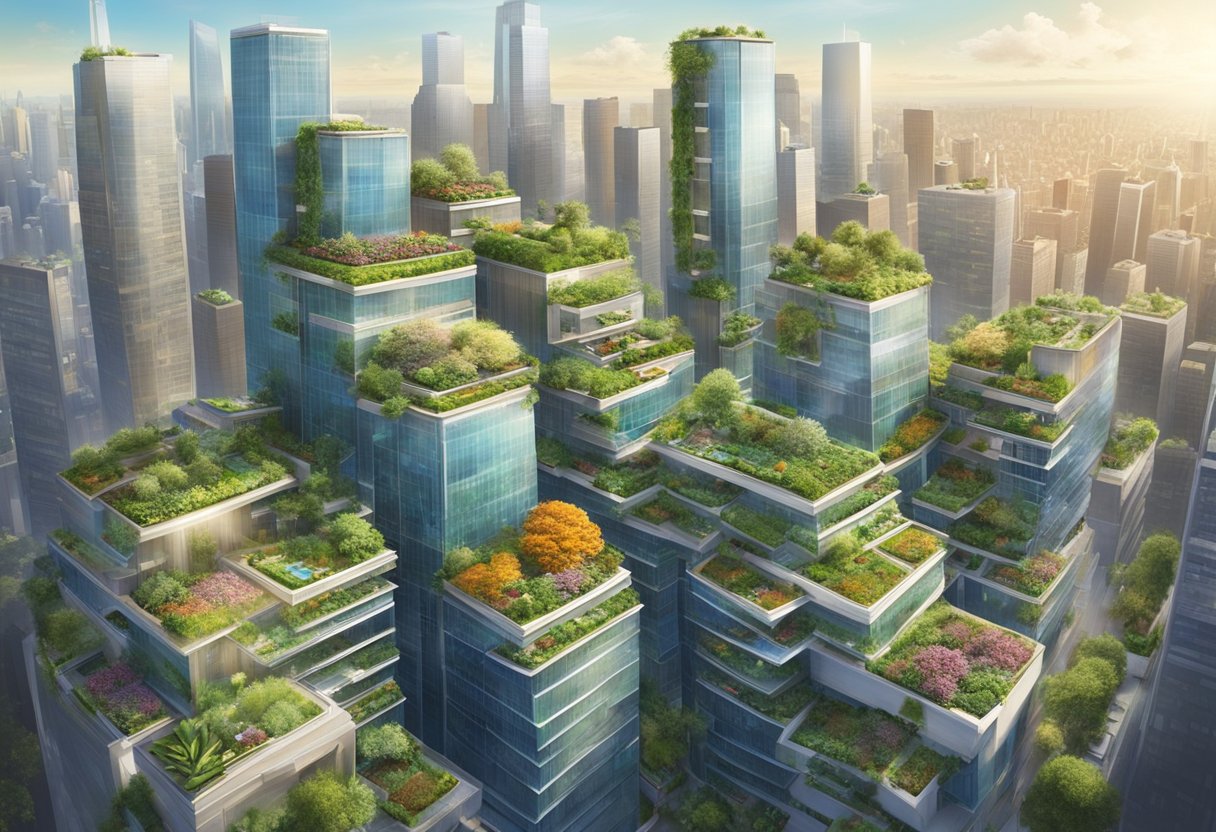
Urban sustainable developments are projects that aim to improve the quality of life in urban areas while minimizing the negative impact on the environment. These projects include a wide range of initiatives such as green retrofitting, community gardens, and vertical farming projects.
Urban areas are characterized by high population densities, which can lead to environmental problems such as pollution, waste, and resource depletion. Urban sustainable developments aim to address these issues by promoting sustainable practices such as energy efficiency, waste reduction, and the use of renewable resources.
Urban farming and agriculture are important components of sustainable urban development. Urban farming involves growing crops and raising animals in urban areas, while urban agriculture involves the use of urban spaces for food production. These practices can help to reduce the environmental impact of food production and increase access to fresh, healthy food in urban areas.
Vertical farming is a type of urban agriculture that involves growing crops in vertically stacked layers. This approach allows for more efficient use of space and resources, and can help to reduce the environmental impact of food production.
Community gardens are another important component of urban sustainable development. These gardens provide a space for community members to grow their own food and connect with nature. They can also help to improve air quality, reduce the urban heat island effect, and promote biodiversity in urban areas.
Investing in crowdfunded urban sustainable developments can be a great way to support these initiatives and promote sustainable urban development. Crowdfunding platforms allow individuals to invest in projects that align with their values and support the development of sustainable urban communities.
Overall, urban sustainable developments are an important tool for promoting sustainable urbanization and improving the quality of life in urban areas. By supporting initiatives such as urban farming, green retrofitting, and community gardens, individuals can help to create more livable, sustainable, and resilient urban communities.
Vertical Farming Projects
Vertical farming is a sustainable and innovative approach to food production that involves growing crops in vertically stacked layers, often in a controlled indoor environment. This farming technique is gaining popularity due to its potential to reduce carbon emissions, water usage, and deforestation while increasing productivity and food security.
Basics of Vertical Farming
Vertical farming involves growing crops in trays or containers stacked vertically, often in a controlled environment. This technique allows farmers to grow crops year-round, regardless of weather conditions, and in areas where arable land is scarce. Vertical farming also reduces the amount of water needed for irrigation and eliminates the need for pesticides, resulting in environmentally responsible and fresh greens with high nutrient content.
Design and Engineering of Vertical Farms
Design and engineering are critical elements of vertical farming projects. The goal is to create an environment that maximizes productivity and crop yield while minimizing energy costs and maintenance. Tower gardens, hydroponic systems, and aeroponic systems are among the most common designs used in vertical farms.
Lighting in Vertical Farming
Lighting is a crucial factor in vertical farming. LED lights are often used instead of natural sunlight to provide plants with the required light spectrum. LED lighting allows for precise control of the light quality, intensity, and duration, resulting in optimal growth conditions for the plants.
Climate Control in Vertical Farms
Temperature and humidity control are critical in vertical farming. Microclimate control is achieved by monitoring and adjusting the temperature, humidity, and air quality in the growing environment. This ensures that crops grow in optimal conditions and that disease is prevented.
Vertical Farming Vs Traditional Farming
Vertical farming has several advantages over traditional farming, including higher productivity, reduced water usage, and the elimination of food miles. Vertical farms can also reduce the need for arable land, making it an excellent option for urban areas.
Vertical Farming Around the World
Vertical farming projects are being implemented around the world, from the USDA in the United States to Scotland, Australia, France, Tokyo, and New York. These projects are aimed at addressing global food demand, reducing carbon emissions, and increasing food security while providing fresh, local produce.
In conclusion, vertical farming is an innovative and sustainable approach to food production that has the potential to address many of the challenges facing agriculture today. With careful design and engineering, vertical farms can provide a controlled environment that maximizes productivity while minimizing energy costs and maintenance. As more projects are implemented, vertical farming will continue to play an essential role in sustainable food production.
Crowdfunded Investments in Urban Developments
Understanding Crowdfunding
Crowdfunding is a method of raising funds from a large number of people, typically via the internet. Crowdfunding has become increasingly popular in recent years, and it has become a popular way to fund urban sustainable developments. Crowdfunding platforms allow individuals to invest in projects that align with their values and interests, such as green retrofitting, community gardens, and vertical farming projects.
Crowdfunding is a form of alternative finance that allows individuals to bypass traditional financial institutions and invest directly in projects they believe in. Crowdfunding platforms typically charge a fee for their services, but the fees are typically lower than those charged by traditional financial institutions.
How to Start Investing
Investing in crowdfunded urban sustainable developments is a relatively straightforward process. First, investors need to identify a crowdfunding platform that aligns with their values and interests. There are many crowdfunding platforms available, and investors should take the time to research each platform before making a decision.
Once an investor has identified a crowdfunding platform, they will need to create an account and provide some basic information. Investors will typically need to provide their name, address, and a form of identification. Once the account has been created, investors can browse the available projects and choose the projects they want to invest in.
Investors should take the time to research each project before investing. They should review the project’s business plan, financial projections, and any other relevant information. Investors should also consider the risks associated with each project, such as the potential for the project to fail or the possibility of a downturn in the real estate market.
Investors should also consider diversifying their investments across multiple projects. This can help to mitigate the risk of any one project failing and can help to ensure a more stable return on investment.
In conclusion, investing in crowdfunded urban sustainable developments is a great way to support projects that align with your values and interests. By understanding crowdfunding and following the steps outlined above, investors can start investing in these exciting projects today.
Risk Assessment and Management
Investing in Crowdfunded Urban Sustainable Developments can be a great way to support sustainable agriculture and green retrofitting projects. However, as with any investment, there are risks involved that need to be assessed and managed. In this section, we will discuss the importance of risk assessment and management in Crowdfunded Urban Sustainable Developments.
One of the first steps in risk assessment is to identify potential risks. This can be done by reviewing project proposals and identifying potential risks associated with the project. These risks may include environmental risks, financial risks, and social risks. Once potential risks have been identified, it is important to assess the likelihood and impact of each risk.
When assessing the likelihood of a risk, investors should consider factors such as the project’s location, the experience of the project team, and the complexity of the project. Investors should also consider the impact of the risk on the project’s success and their investment.
After identifying and assessing potential risks, it is important to develop a risk management plan. This plan should outline strategies for mitigating and managing risks. Strategies may include diversifying investments, requiring project teams to have insurance, and conducting regular project audits.
Investors should also consider the importance of transparency and accountability in Crowdfunded Urban Sustainable Developments. This can be achieved by requiring project teams to provide regular updates on the project’s progress and by conducting regular audits to ensure that funds are being used appropriately.
In conclusion, risk assessment and management are critical components of investing in Crowdfunded Urban Sustainable Developments. By identifying potential risks, assessing their likelihood and impact, and developing a risk management plan, investors can help ensure the success of sustainable agriculture and green retrofitting projects while minimizing their exposure to risk.
Green Retrofitting
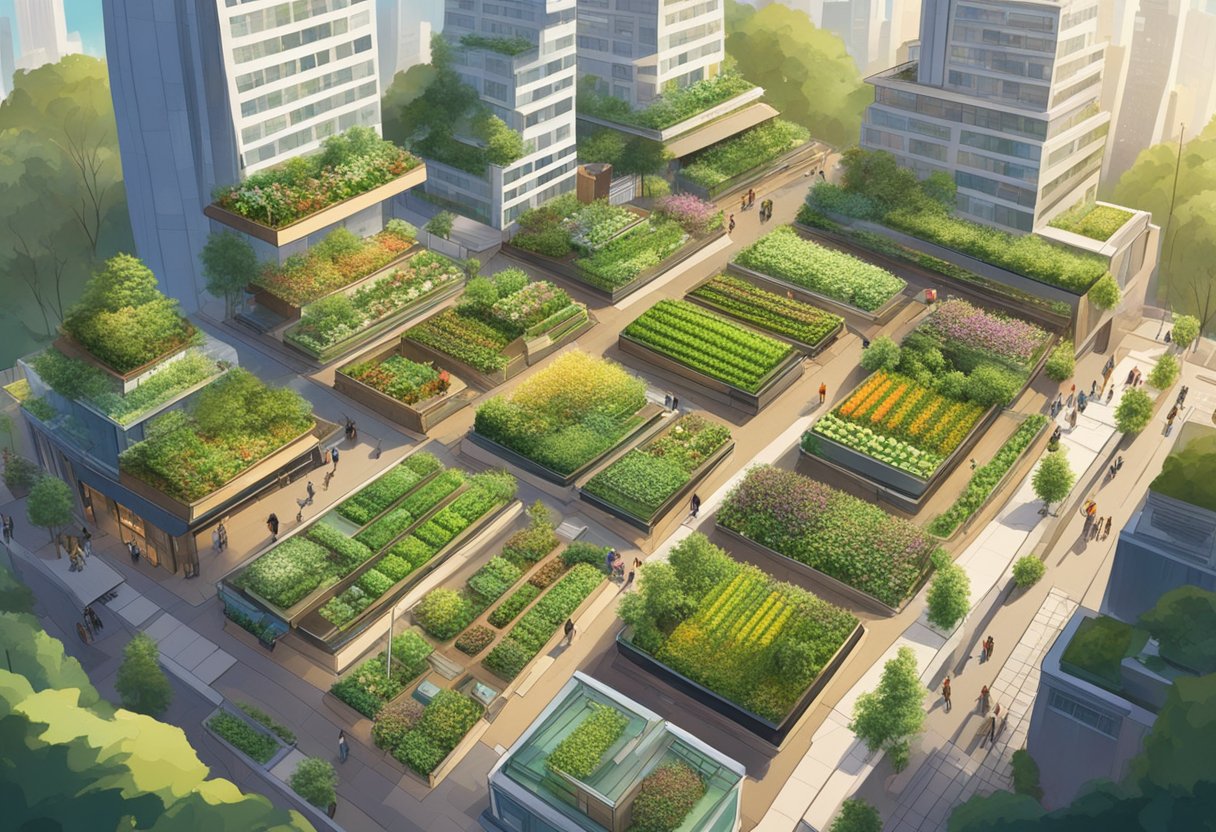
Understanding Green Retrofitting
Green retrofitting refers to the process of upgrading existing buildings and infrastructure to make them more energy-efficient, sustainable, and environmentally friendly. It involves the implementation of various strategies and technologies that can reduce energy consumption, water usage, and carbon emissions, while also improving indoor air quality and promoting biodiversity. Green retrofitting can be applied to a wide range of buildings and structures, including residential homes, commercial buildings, and public infrastructure.
The concept of green retrofitting has gained popularity in recent years due to the increasing awareness of the environmental crisis and the need to reduce our carbon footprint. By retrofitting existing buildings, we can reduce our energy costs, improve the quality of our indoor environment, and promote sustainable development.
Benefits of Green Retrofitting
Green retrofitting offers numerous benefits, both for the environment and for building owners and occupants. Some of the key benefits of green retrofitting include:
-
Reduced energy costs: By implementing energy-efficient technologies and strategies, building owners can significantly reduce their energy bills and save money in the long run.
-
Improved indoor air quality: Green retrofitting can improve indoor air quality by reducing the amount of pollutants and allergens in the air, which can have a positive impact on the health and wellbeing of building occupants.
-
Promotion of biodiversity: Green retrofitting can promote biodiversity by creating green spaces and habitats for plants and animals, which can help to improve the local ecosystem and reduce the impact of urbanization on wildlife.
-
Increased property value: Green retrofitting can increase the value of a property by making it more attractive to potential buyers and tenants who are looking for sustainable and environmentally friendly buildings.
-
Reduced carbon emissions: By reducing energy consumption and promoting the use of renewable energy sources, green retrofitting can help to reduce carbon emissions and mitigate the impact of climate change.
Overall, green retrofitting is an effective way to improve the sustainability and energy efficiency of existing buildings and infrastructure, while also promoting biodiversity and reducing our carbon footprint.
Community Gardens
Community gardens are a great way for people to come together and grow fresh produce in urban areas. They provide a space for people to connect with nature, increase biodiversity, and promote sustainability. In this section, we will discuss the importance of community gardens and how to start one.
Importance of Community Gardens
Community gardens are essential for the environment and sustainability. They provide green spaces in urban areas, which are essential for biodiversity and soil health. They also promote food security by providing fresh produce to urban areas, which can be especially important during times of crisis. Additionally, community gardens are a great way to promote local produce and reduce the carbon footprint of food transportation.
Starting a Community Garden
Starting a community garden requires planning, organization, and maintenance. The first step is to find a suitable location for the garden. This could be a public park or an unused plot of land. Once a location is secured, the garden should be designed to maximize sunlight, water, and soil quality.
The next step is to recruit volunteers and secure funding. Crowdfunding is an excellent way to raise money for community gardens. There are many crowdfunding platforms available that allow people to donate money to support sustainable development projects.
After the garden is established, it is essential to maintain it properly. This includes watering the plants, weeding, and harvesting the produce. Community gardens also provide an opportunity for education and outreach. Workshops and events can be organized to teach people about gardening, sustainability, and the importance of fresh produce.
In conclusion, community gardens are an essential part of sustainable urban development. They provide green spaces, promote biodiversity, and increase food security. Starting a community garden requires planning, organization, and maintenance, but the benefits are well worth the effort.
Investing in Crowdfunded Urban Sustainable Developments
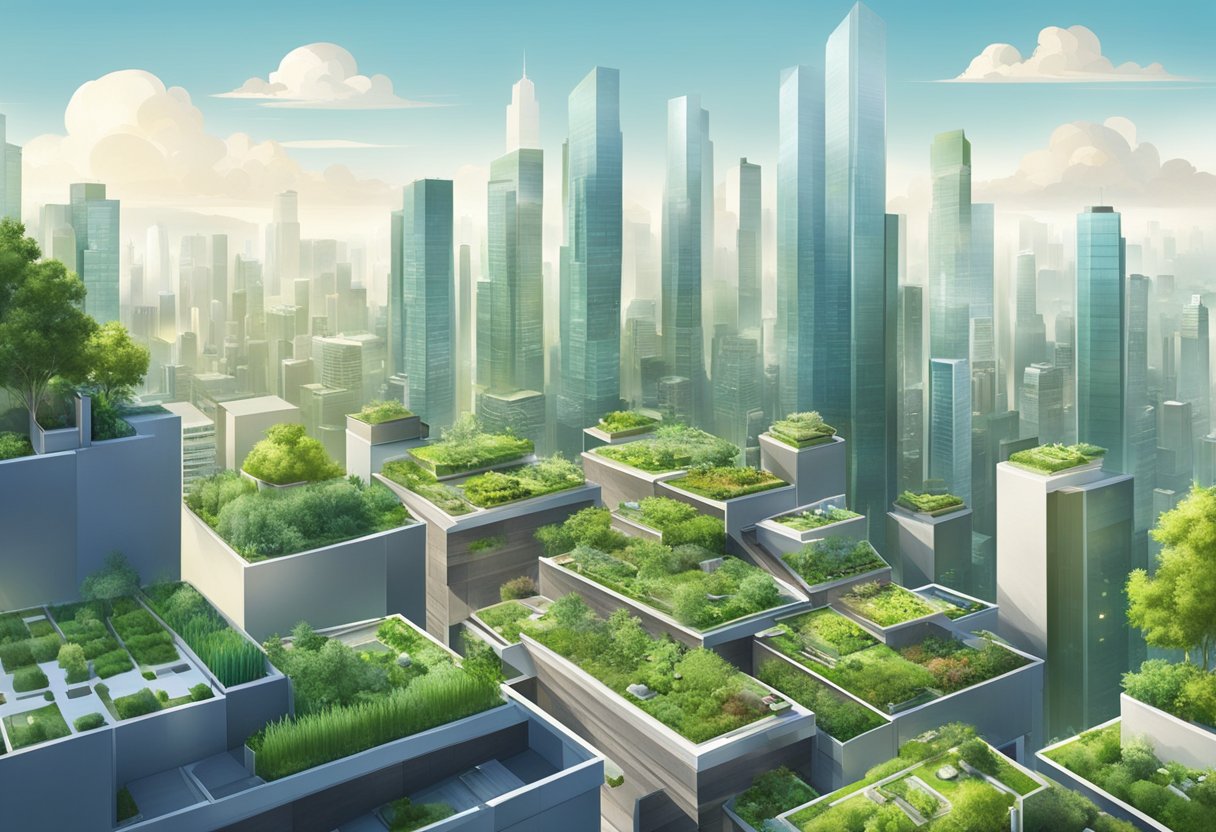
Understanding Crowdfunding for Sustainable Developments
Crowdfunding is a relatively new way of financing projects, including sustainable developments. It is a way for anyone to invest in a project, no matter how small the investment. Crowdfunding platforms connect investors with project developers, allowing them to raise funds without the need for traditional banks or lenders. In the case of sustainable developments, crowdfunding can be an effective way to support projects that aim to reduce carbon emissions, promote food security, and contribute to a more environmentally responsible future.
How to Get Started with Crowdfunding
Investing in crowdfunded sustainable developments can be a great way to support innovative projects that address environmental and social challenges. Before getting started, it is important to do your research and understand the risks and benefits of investing in crowdfunding projects. Here are some steps to get started:
-
Choose a crowdfunding platform: There are many crowdfunding platforms available, each with its own focus and requirements. Some popular platforms for sustainable developments include Abundance, Ethex, and Trillion Fund.
-
Research projects: Once you have chosen a platform, you can start researching projects that align with your values and investment goals. Look for projects that have a clear mission, a well-defined plan, and a strong team.
-
Assess the risks: Crowdfunding investments are not without risk. Before investing, make sure you understand the potential risks and rewards of each project. Look for projects that have a clear risk management plan in place.
-
Invest: Once you have found a project you want to support, you can make an investment. Crowdfunding investments can range from a few pounds to thousands of pounds, so choose an amount that is right for you.
Investing in crowdfunded sustainable developments can be a rewarding way to support innovative projects that address environmental and social challenges. By doing your research and investing wisely, you can help promote sustainability, reduce carbon emissions, and contribute to a more environmentally responsible future.
Frequently Asked Questions
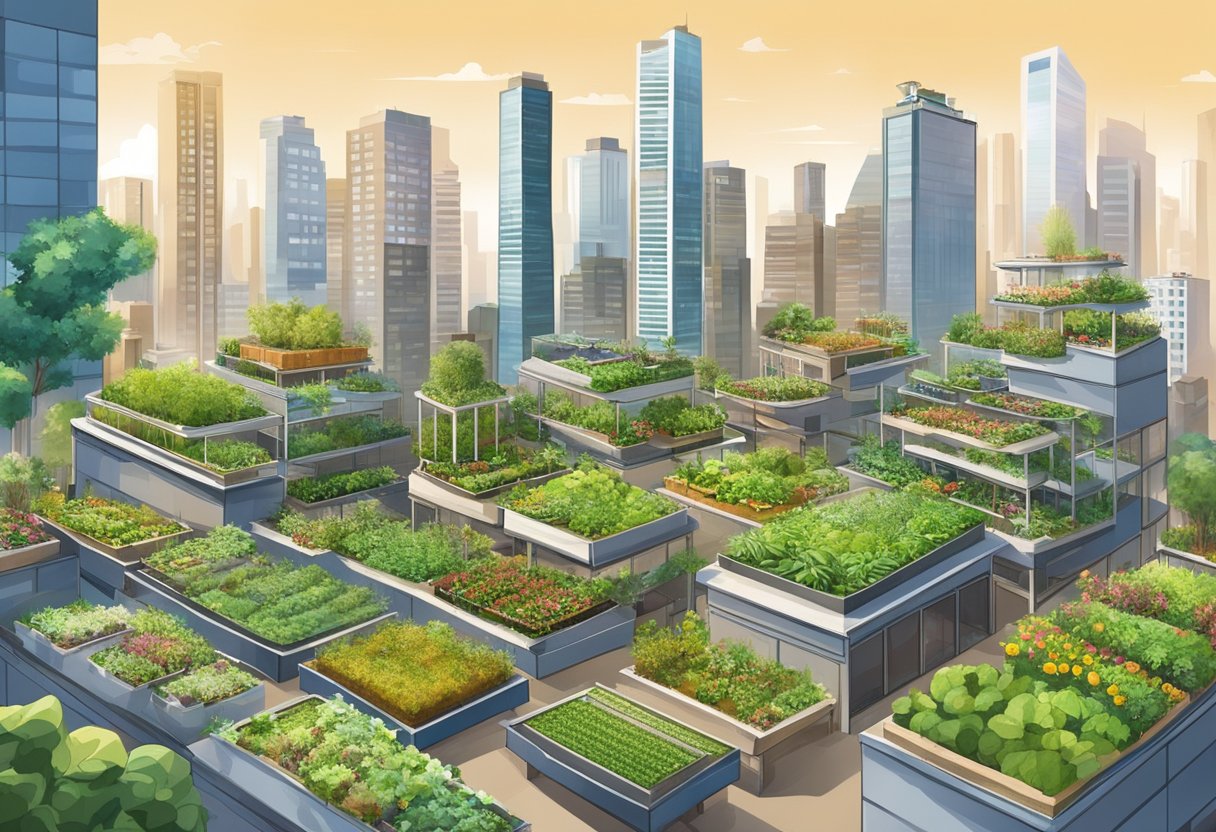
What are the benefits of incorporating green retrofitting in urban sustainable developments?
Green retrofitting involves making existing buildings more energy-efficient and environmentally friendly. Incorporating green retrofitting in urban sustainable developments can have several benefits, including reducing energy costs, reducing greenhouse gas emissions, and improving indoor air quality. Additionally, green retrofitting can increase the value of the property and attract tenants who prioritize sustainability.
What are some successful examples of community gardens in urban areas?
Community gardens provide several benefits, including access to fresh produce, opportunities for physical activity, and community building. Successful examples of community gardens in urban areas include the Brooklyn Grange in New York City, which operates rooftop farms and provides produce to local restaurants and markets, and the Beacon Food Forest in Seattle, which is a seven-acre public food forest that provides free produce to the community.
How can investing in crowdfunded sustainable developments benefit both the investor and the community?
Investing in crowdfunded sustainable developments can benefit both the investor and the community. Investors can earn a return on their investment while supporting sustainable development projects that benefit the environment and the community. Additionally, crowdfunded sustainable developments can provide affordable housing and community spaces, promote economic development, and improve the quality of life for residents.
What are the environmental benefits of vertical farming projects?
Vertical farming projects can have several environmental benefits, including reducing water usage, minimizing pesticide and herbicide use, and reducing transportation emissions. Additionally, vertical farming projects can help conserve land and preserve natural habitats by reducing the need for traditional farming methods.
What are the economic benefits of vertical farming projects?
Vertical farming projects can have several economic benefits, including reducing transportation costs and increasing local food production. Additionally, vertical farming projects can create new jobs in the agriculture and technology sectors and stimulate economic growth in urban areas.
How can vertical farming projects address food insecurity in urban areas?
Vertical farming projects can help address food insecurity in urban areas by providing fresh produce year-round, reducing transportation costs, and increasing access to healthy food options. Additionally, vertical farming projects can create new jobs and stimulate economic growth in low-income communities.
Conclusion
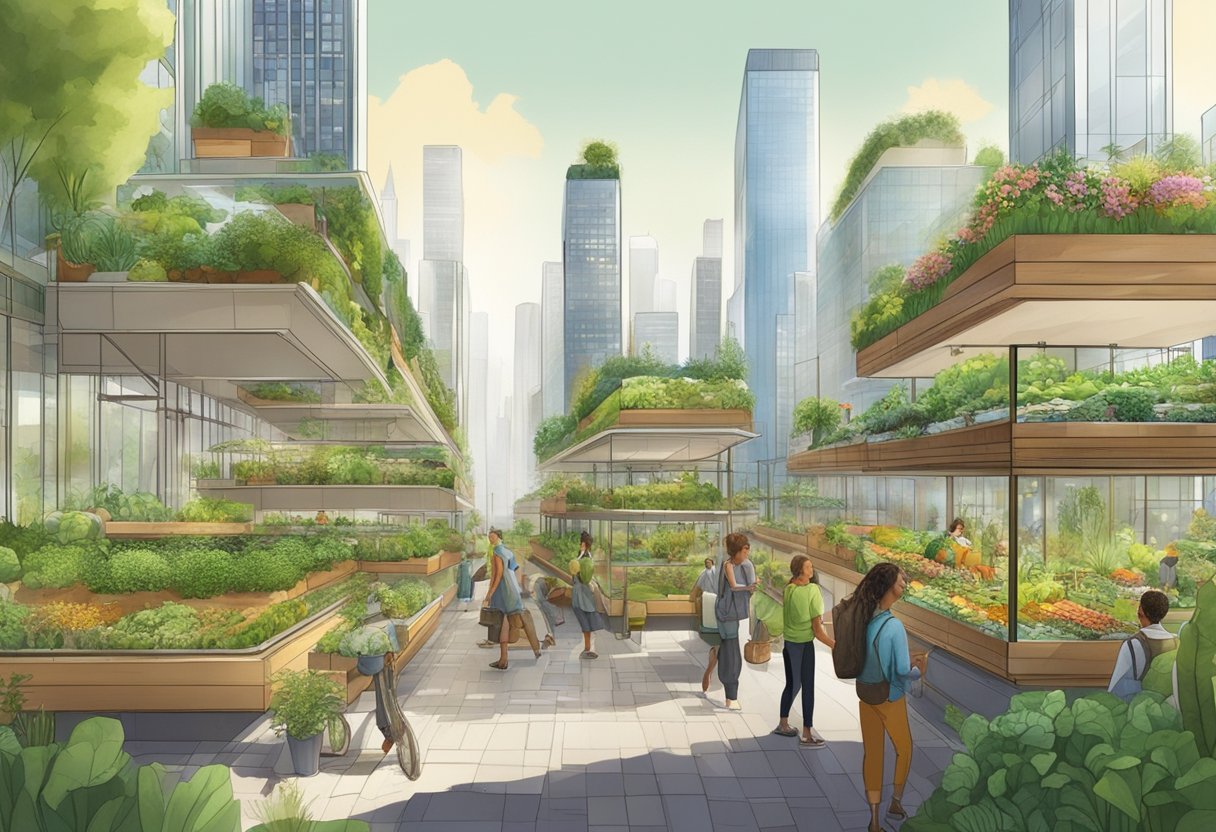
Investing in crowdfunded urban sustainable developments is a great way to support the growth of sustainable agriculture and green retrofitting projects. By investing in these projects, individuals can make a positive impact on their communities and the environment, while also earning a return on their investment.
One of the most promising areas for investment is in vertical farming projects. Vertical farming is a resource-conscious tool for community transformation that can help meet the growing demand for food in urban areas. By using innovative technologies such as hydroponics and aeroponics, vertical farms can grow crops in a controlled environment, using less water and land than traditional farming methods. This makes them ideal for urban areas where space is limited and water is scarce.
Another area of investment is in green retrofitting projects. These projects focus on improving the energy efficiency of existing buildings, reducing their carbon footprint and making them more sustainable. This can involve adding insulation, upgrading HVAC systems, and installing solar panels. Green retrofitting projects not only benefit the environment but can also result in lower energy bills for building owners.
Finally, investing in community gardens is another way to support sustainable agriculture and promote healthy eating habits. Community gardens provide a space for individuals to grow their own food, learn about sustainable agriculture, and connect with their neighbors. They can also help to improve food security in urban areas by providing fresh produce to low-income communities.
Overall, investing in crowdfunded urban sustainable developments is a smart way to support sustainable agriculture and green retrofitting projects while earning a return on investment. By focusing on innovative technologies such as vertical farming, green retrofitting, and community gardens, investors can make a positive impact on their communities and the environment.



